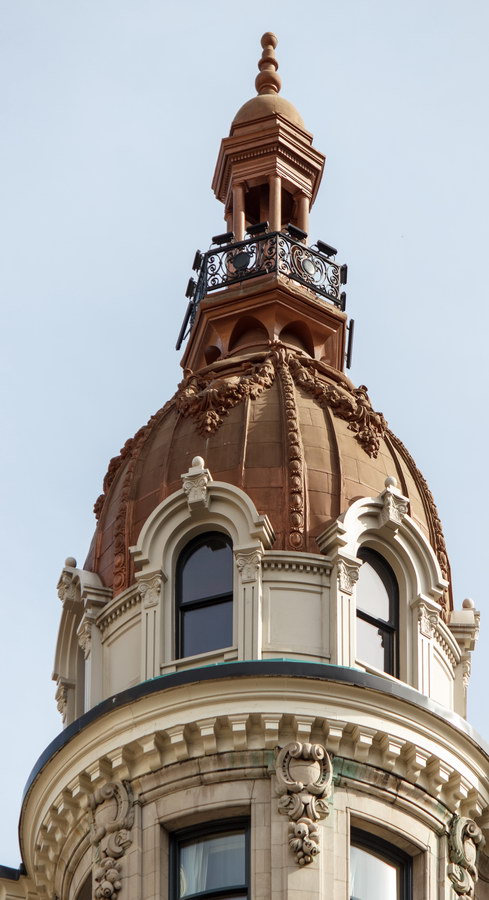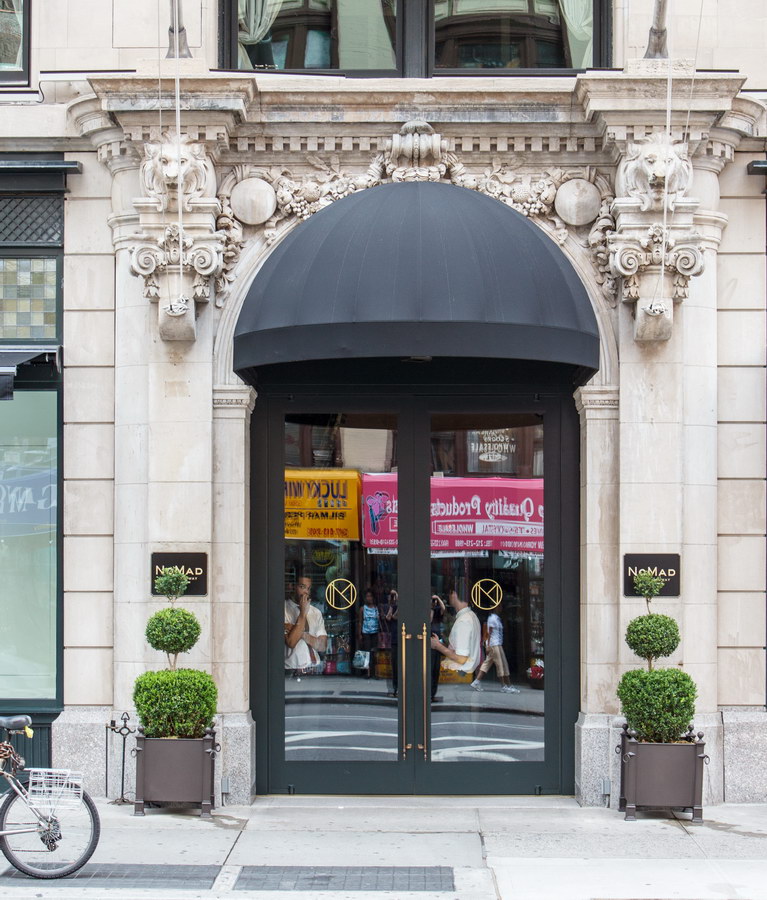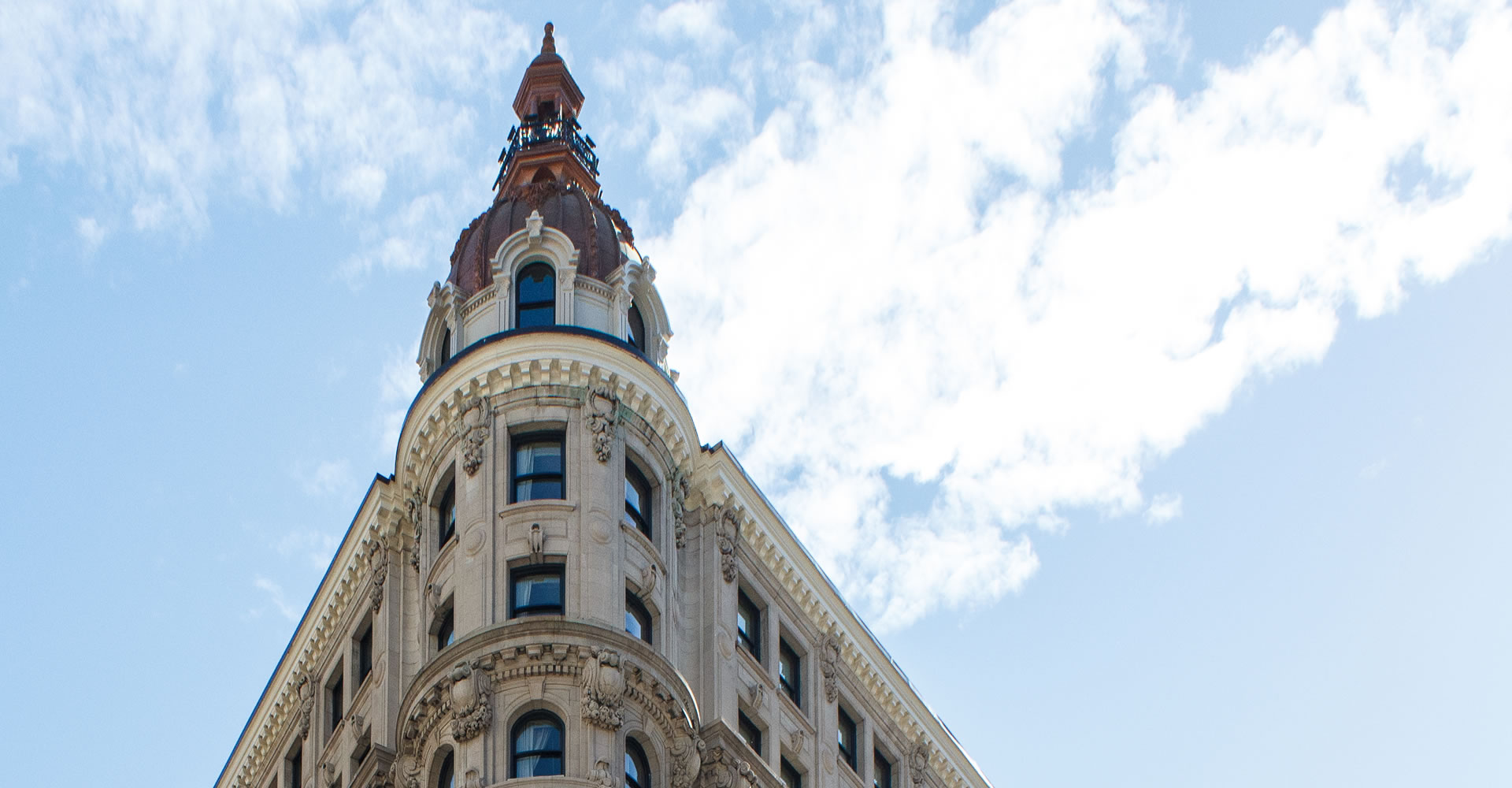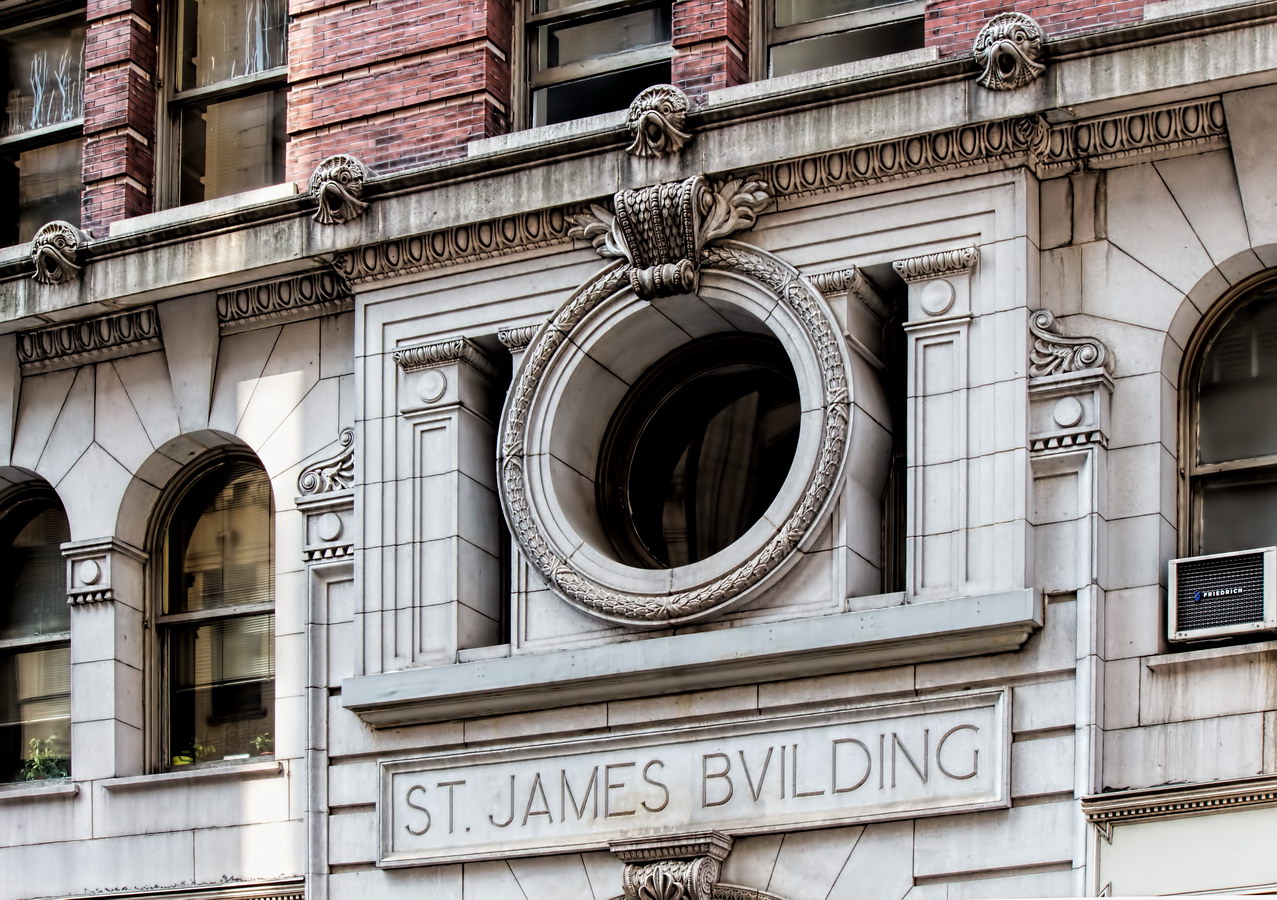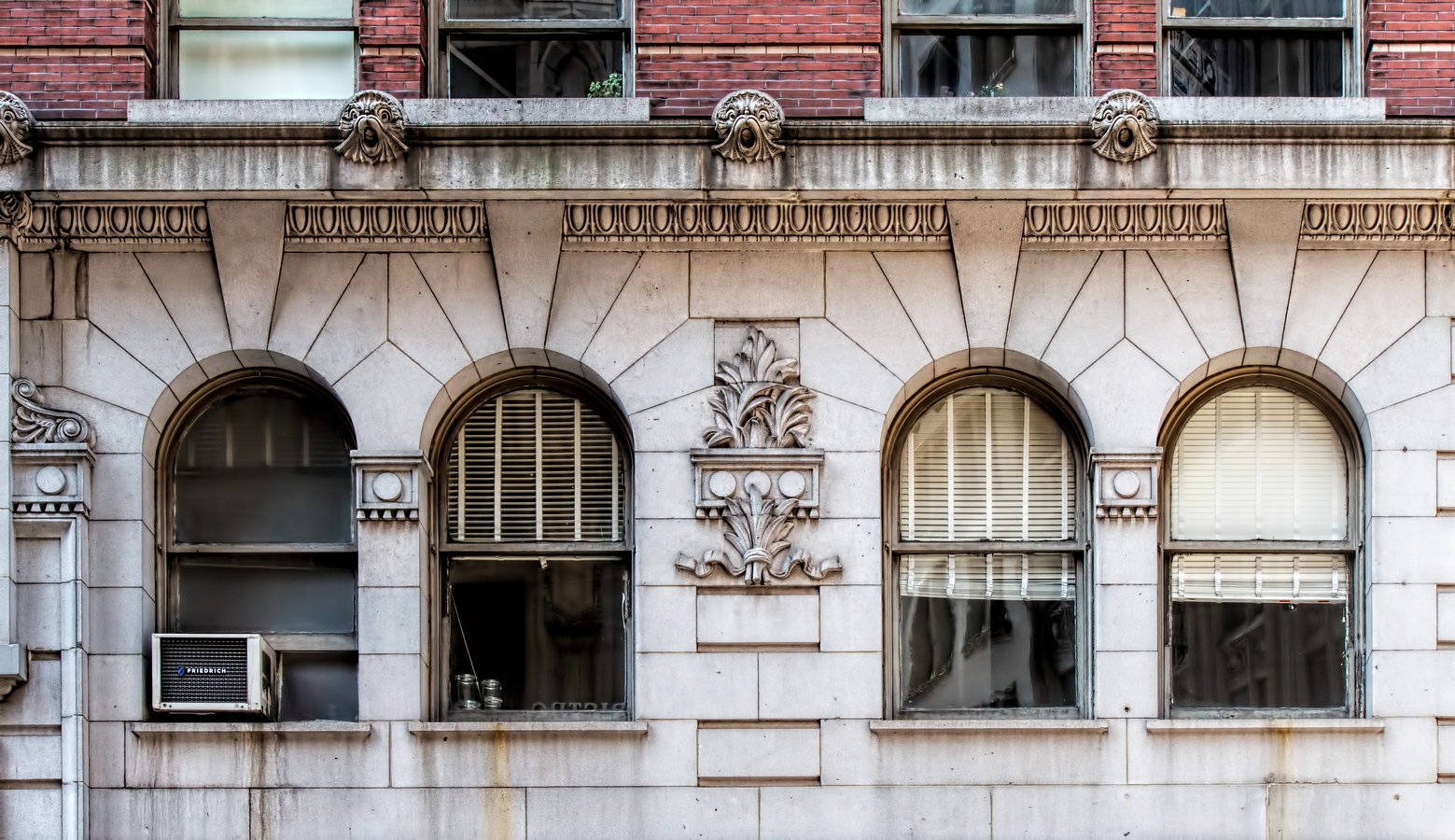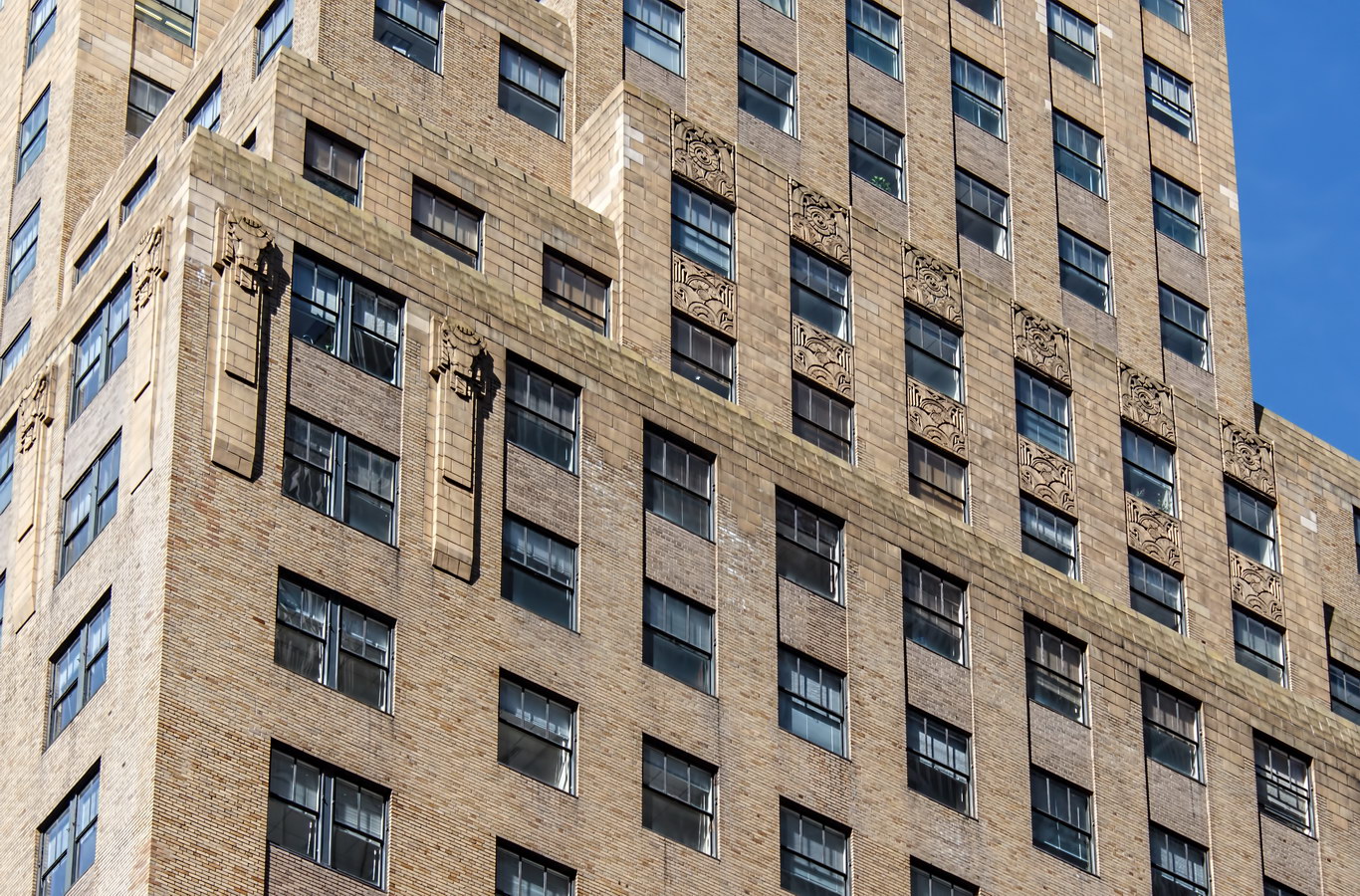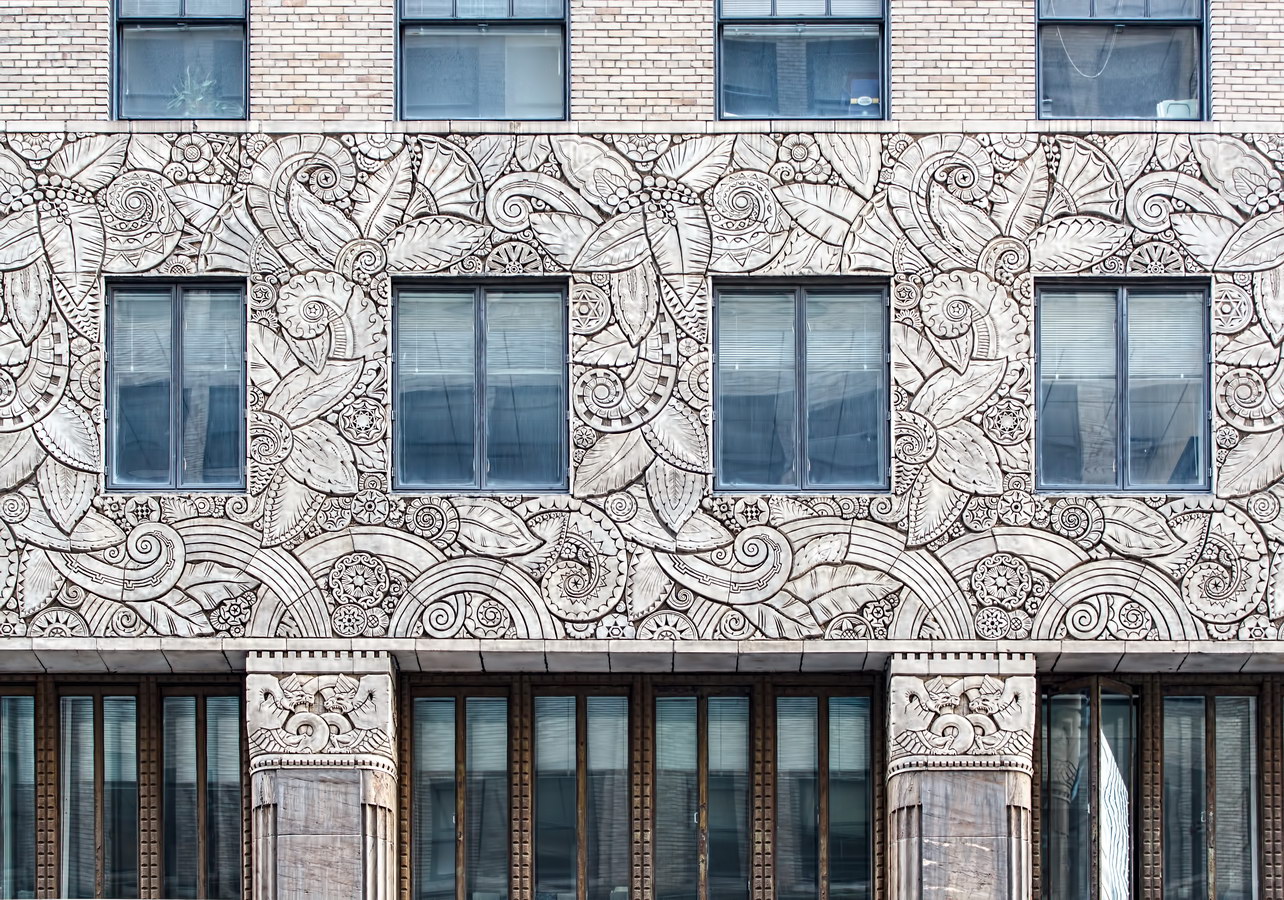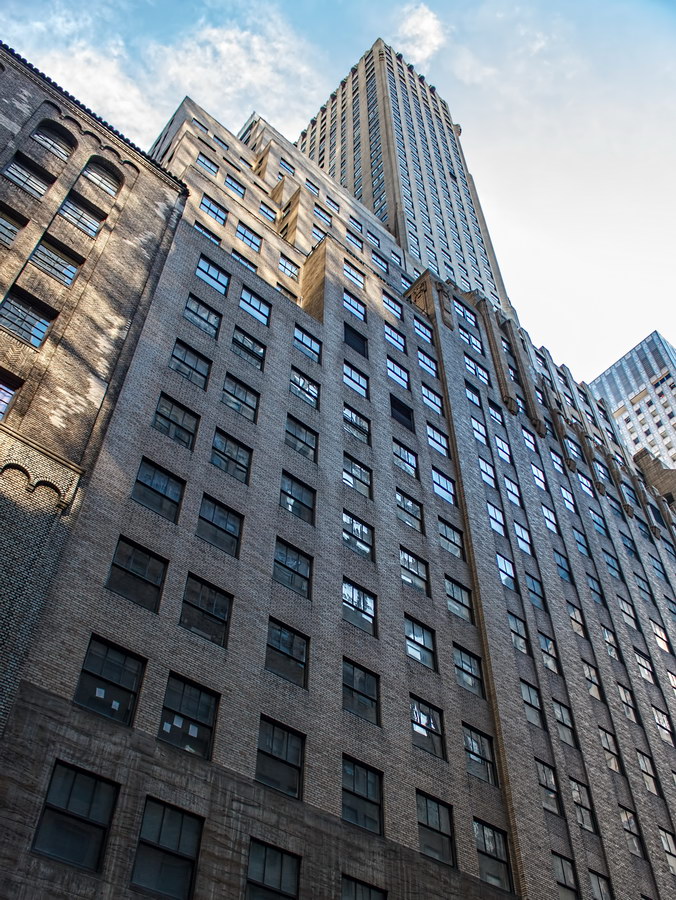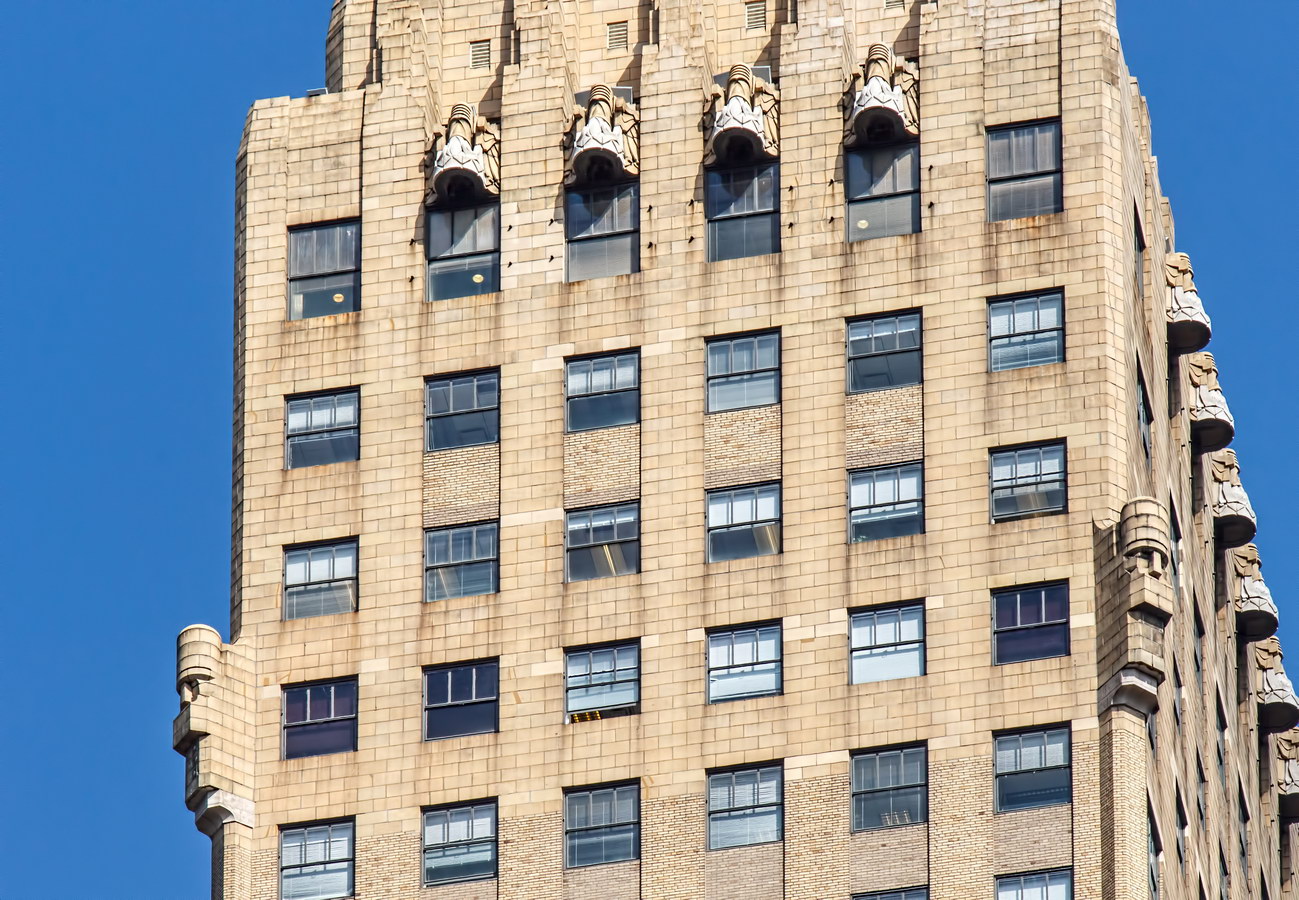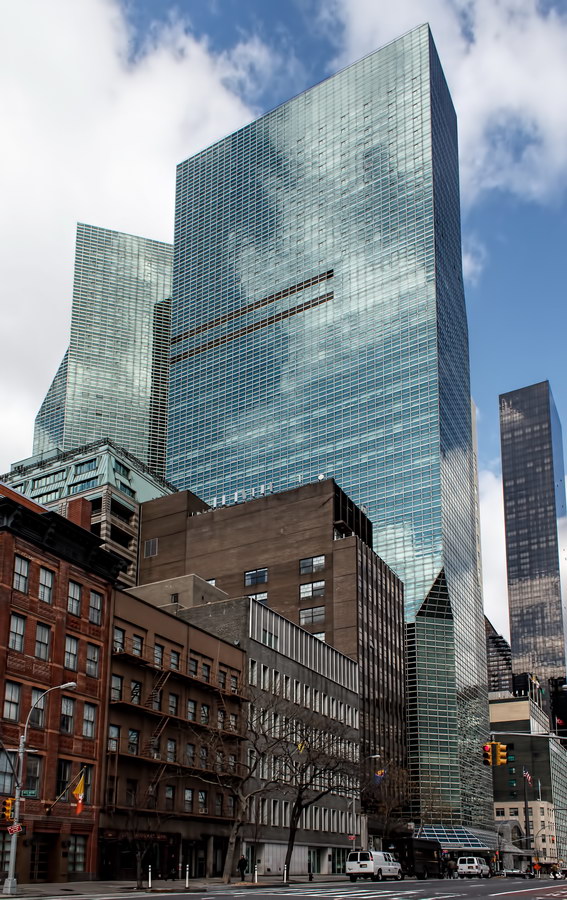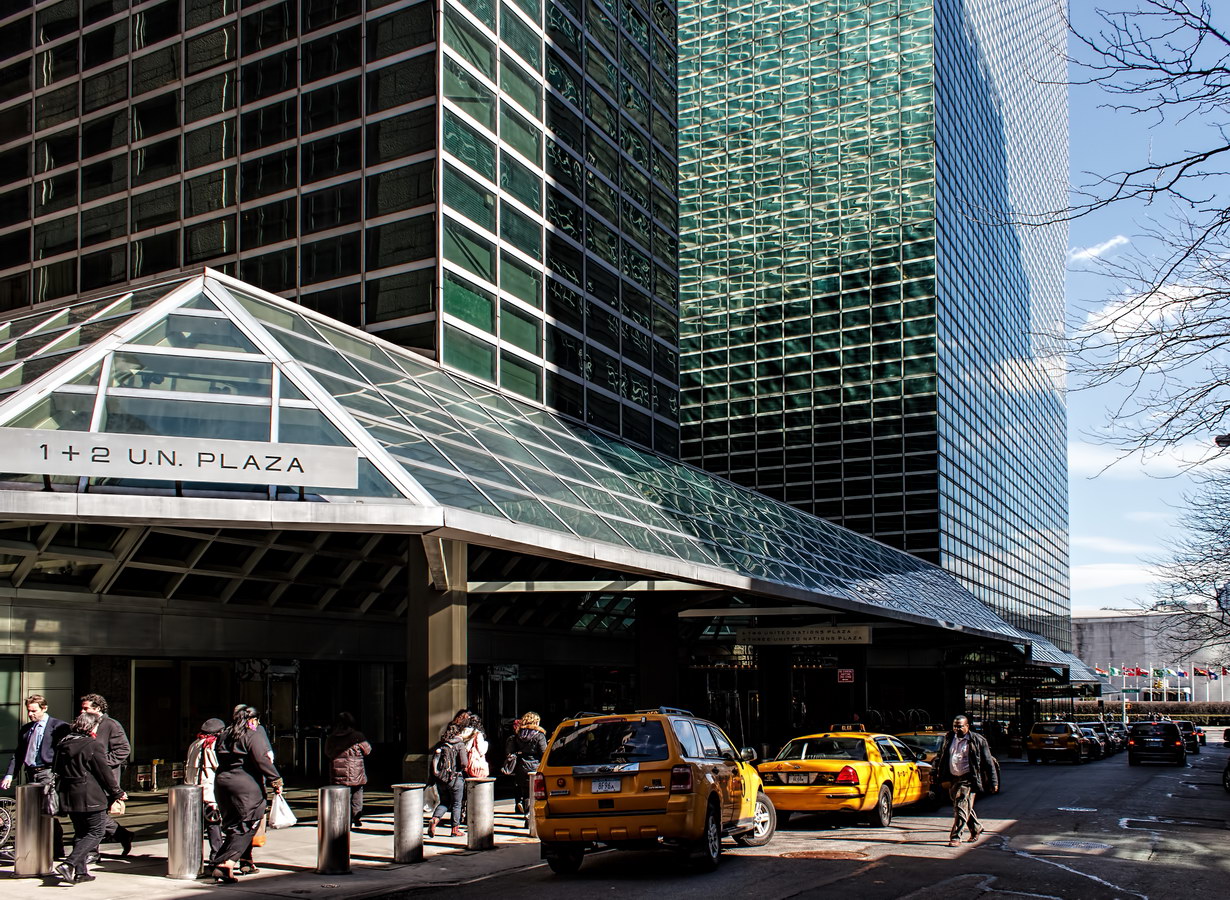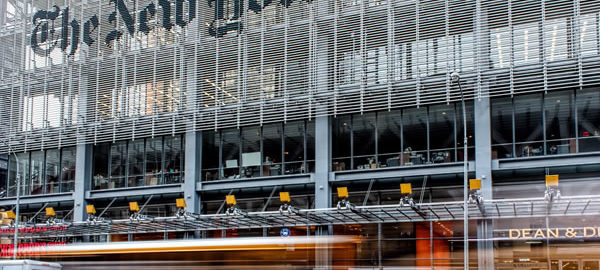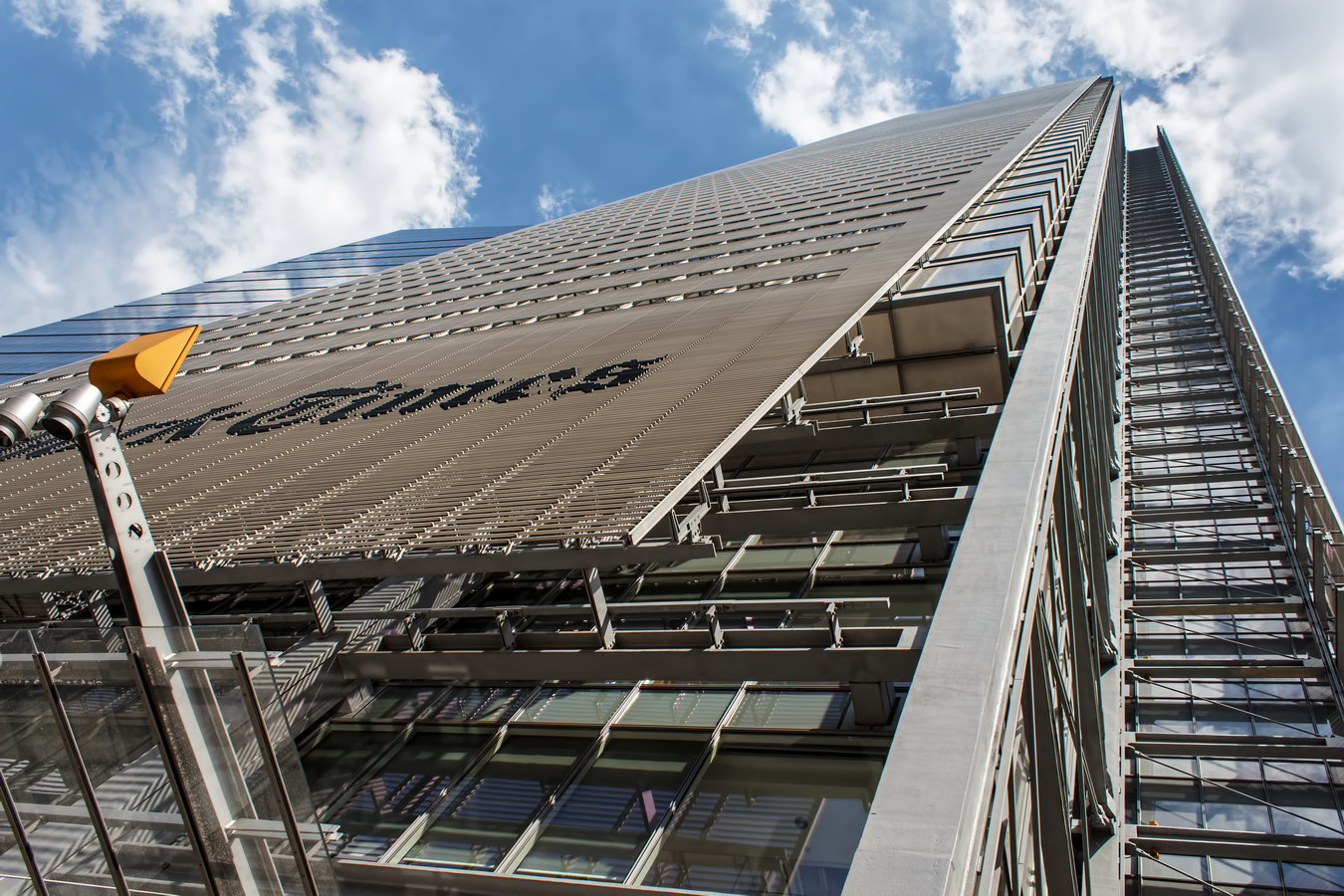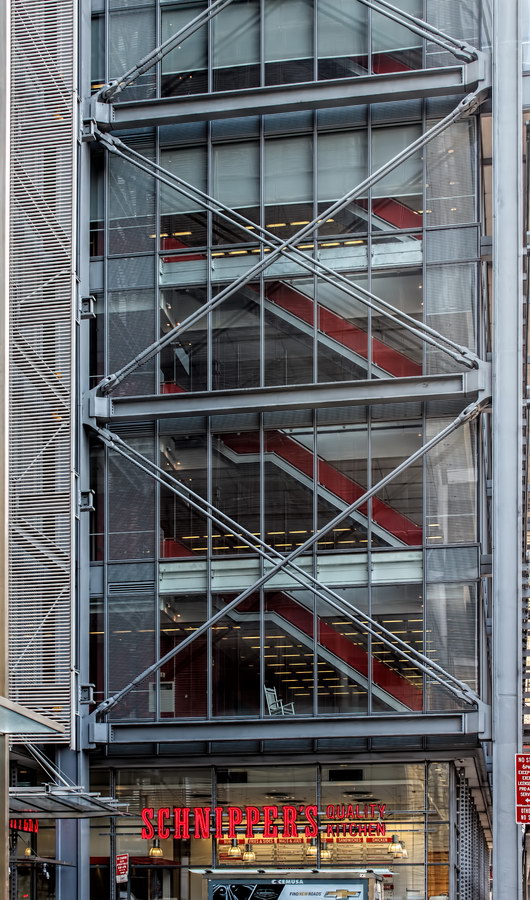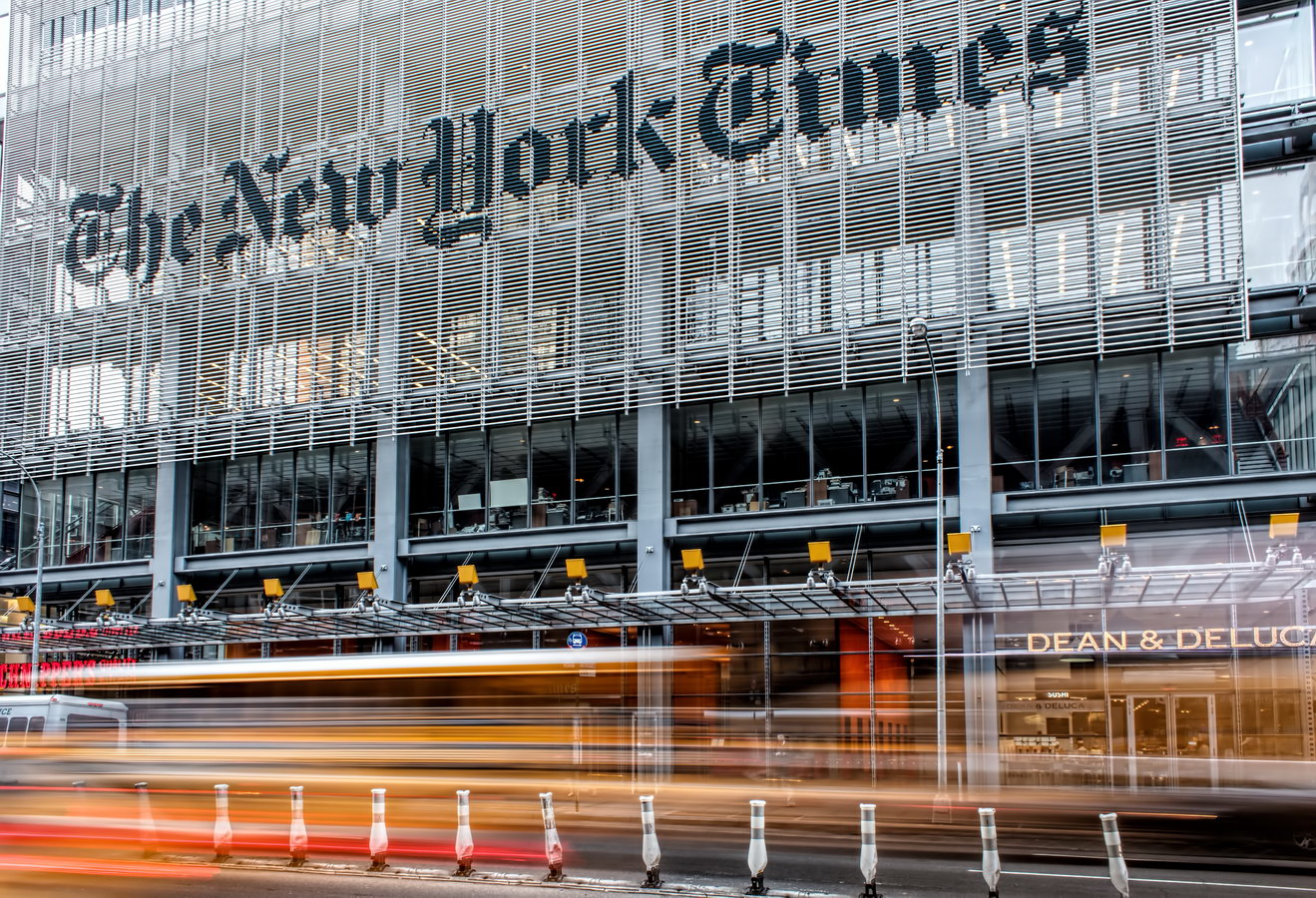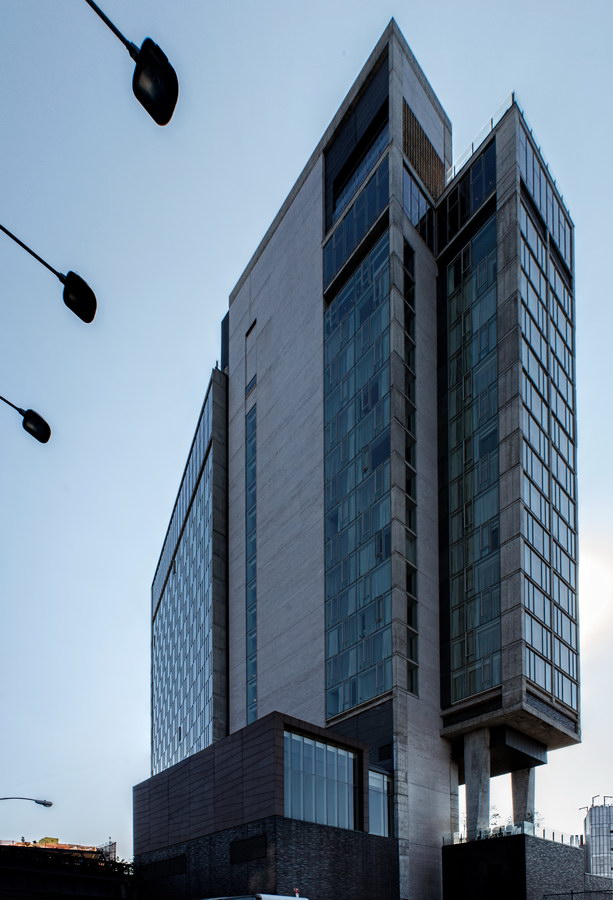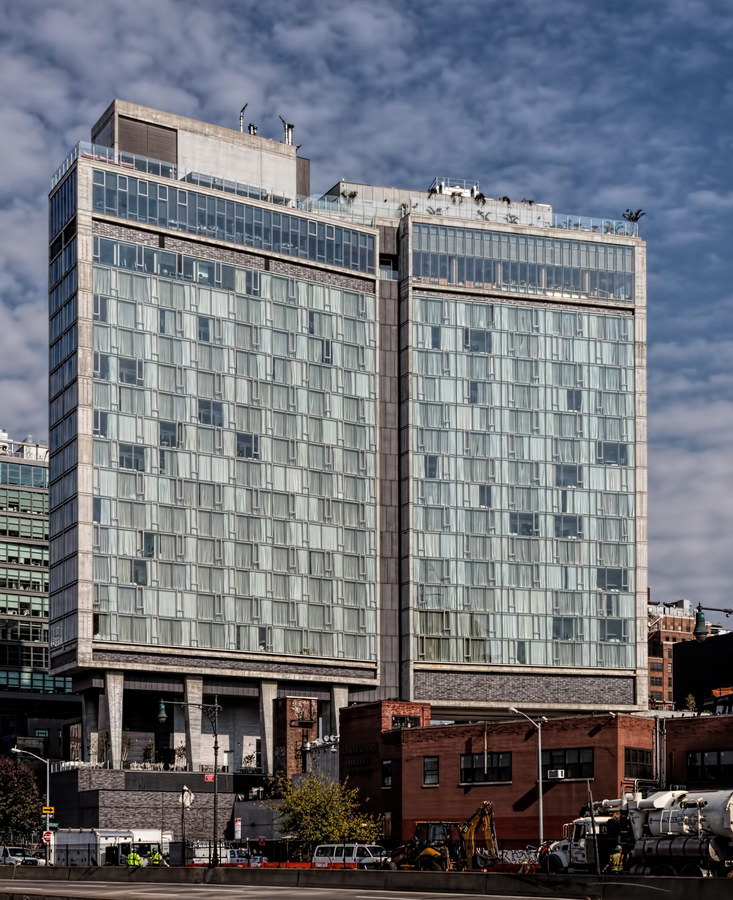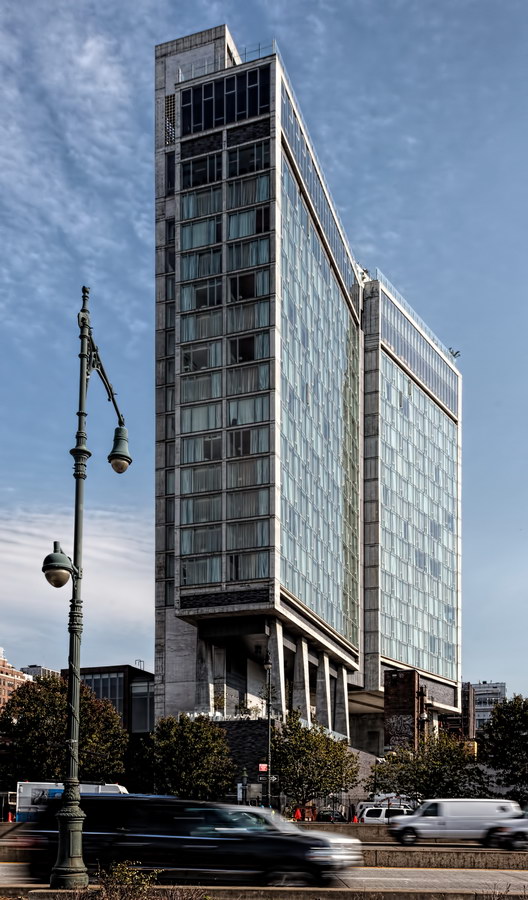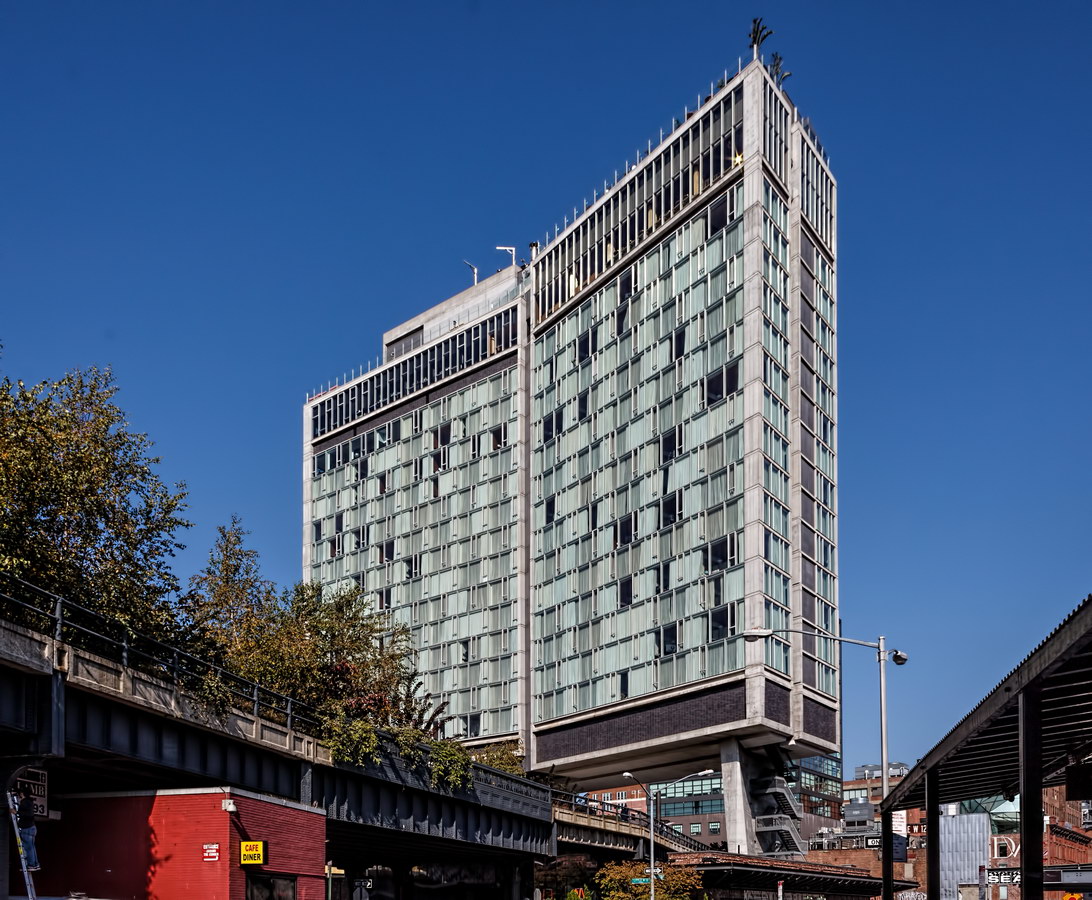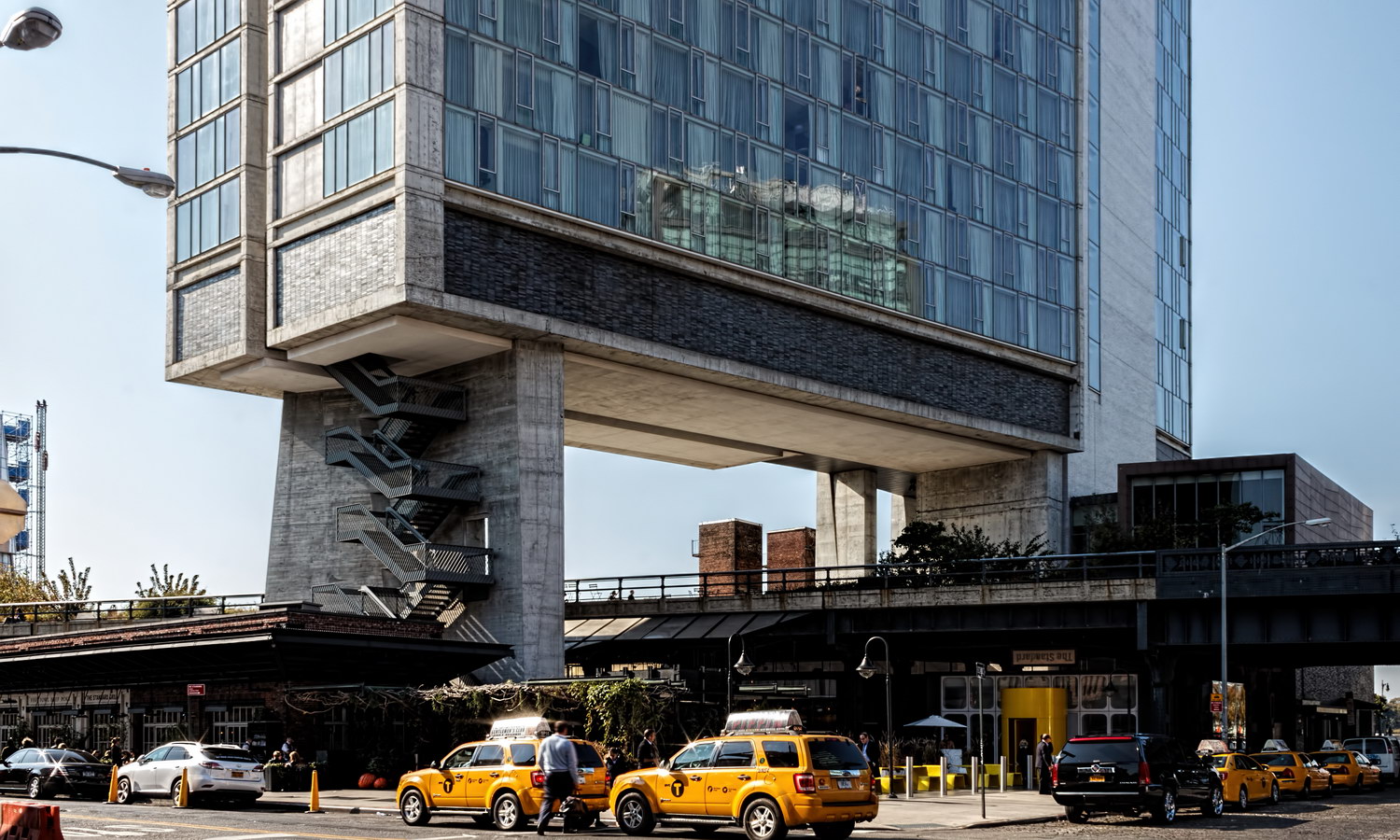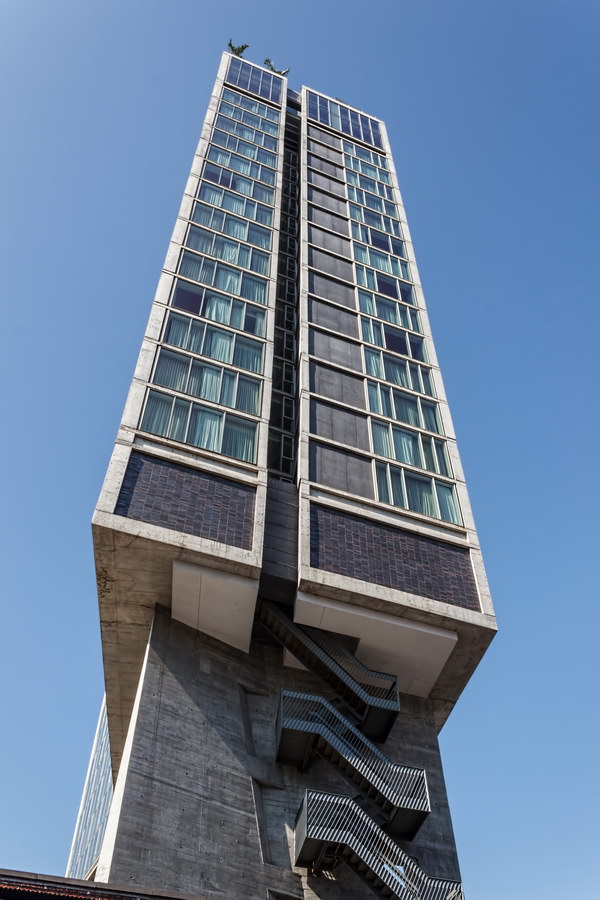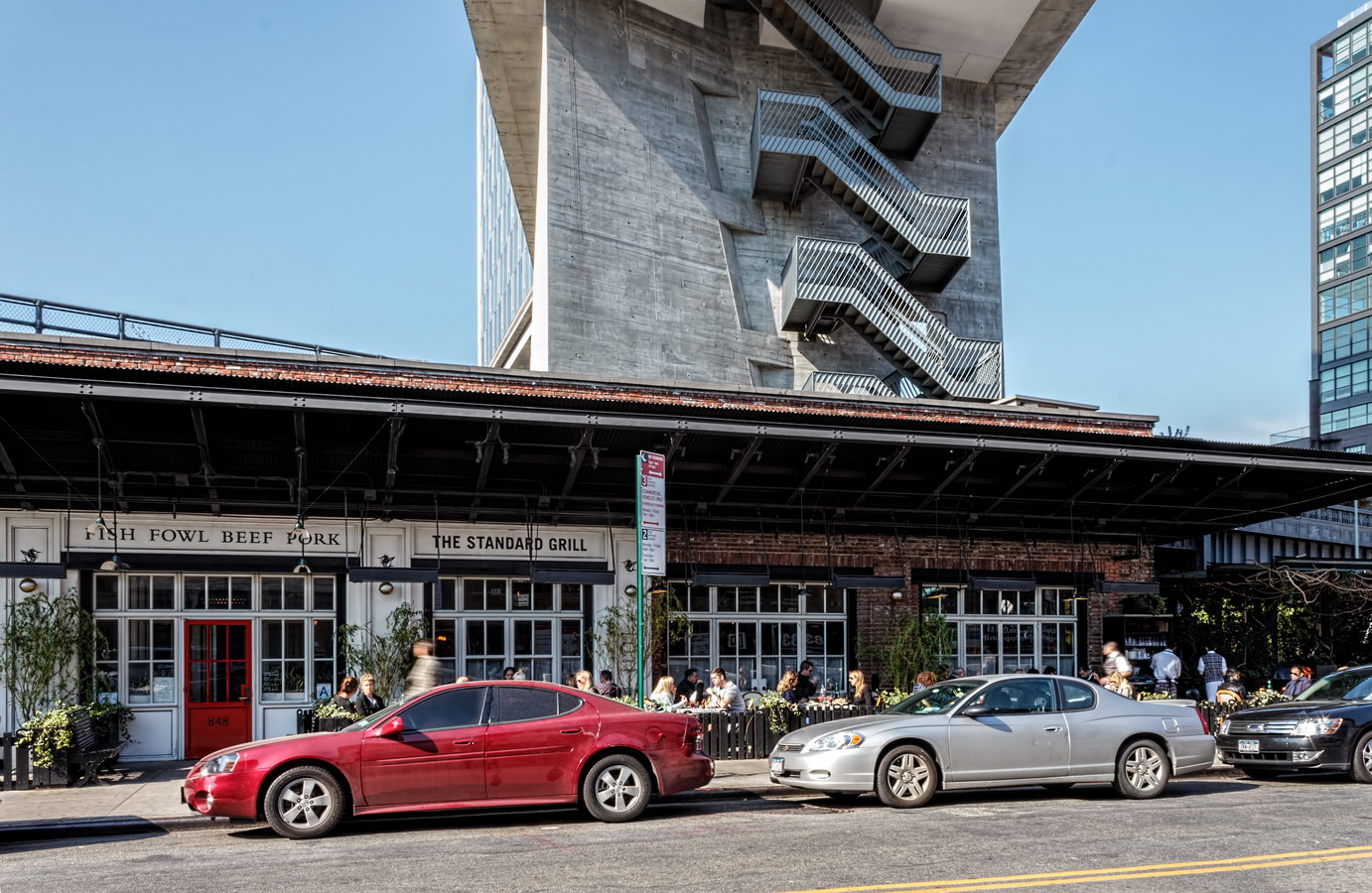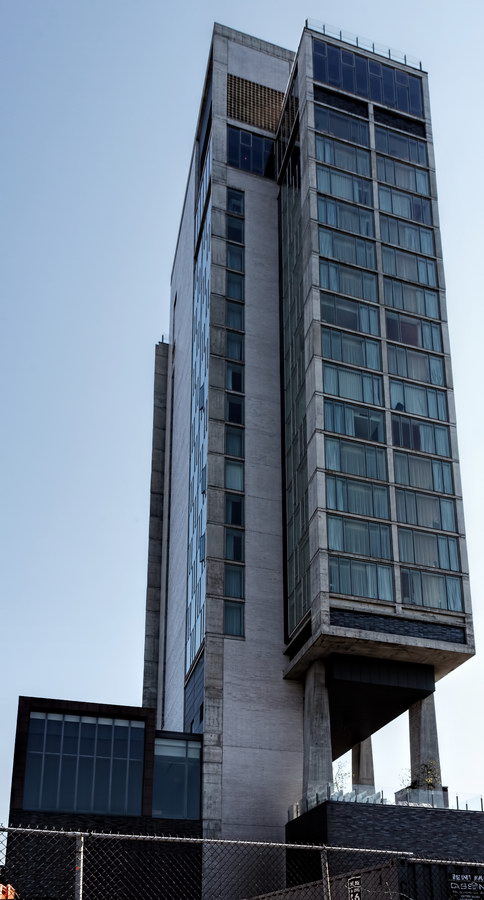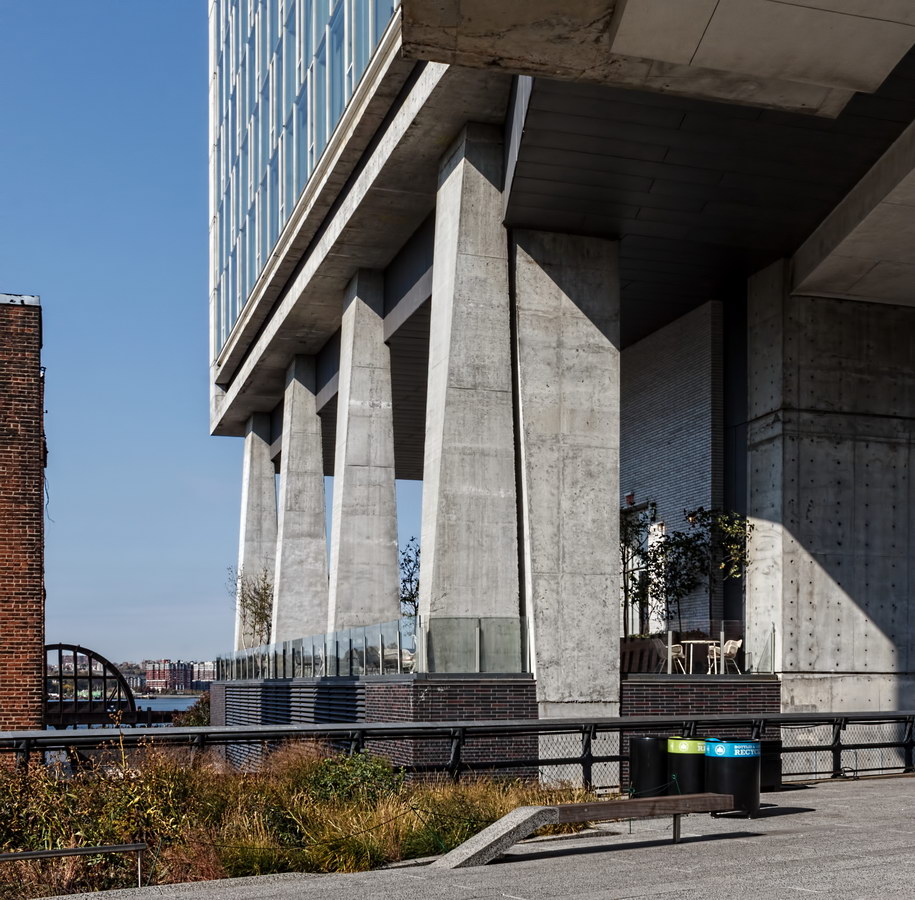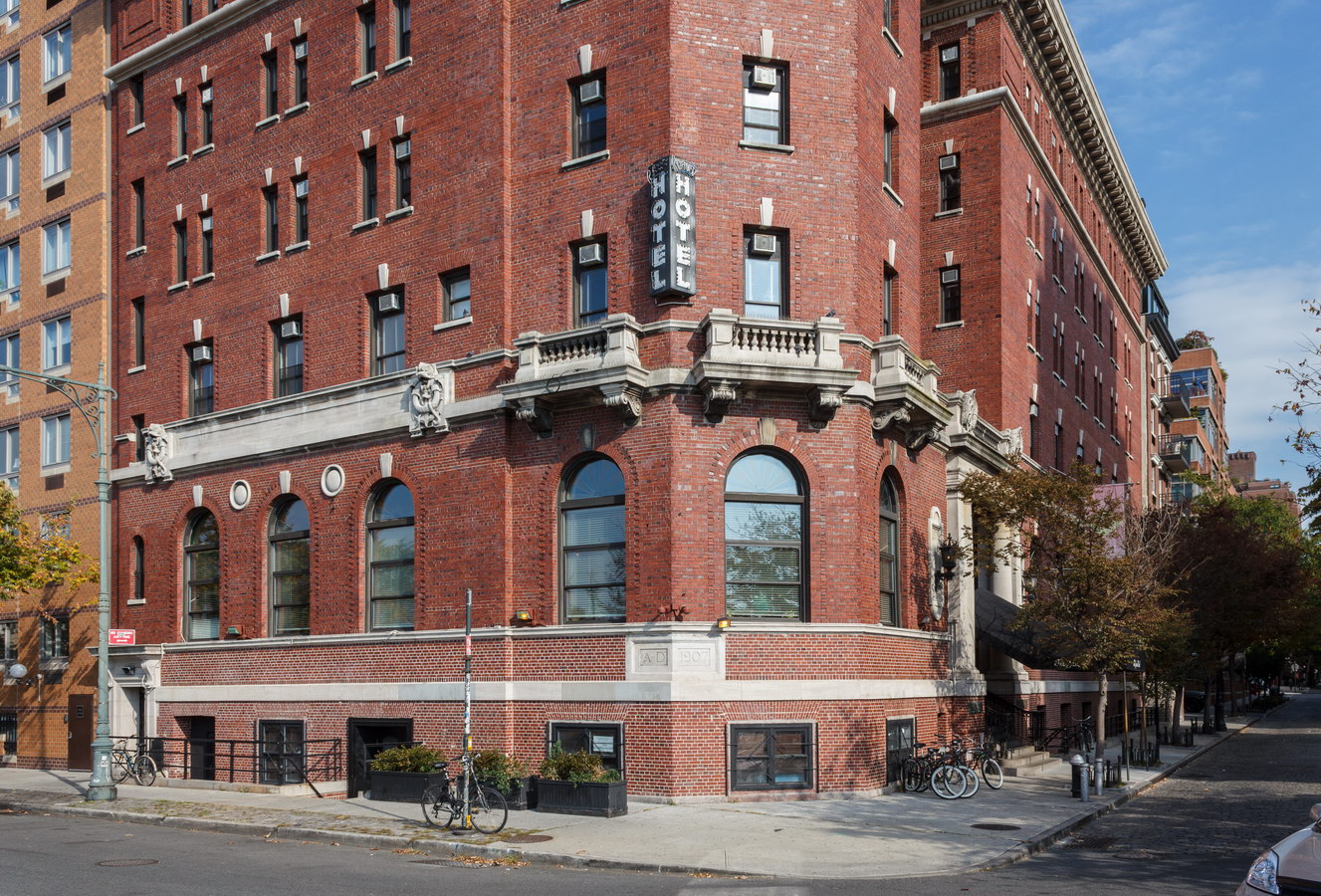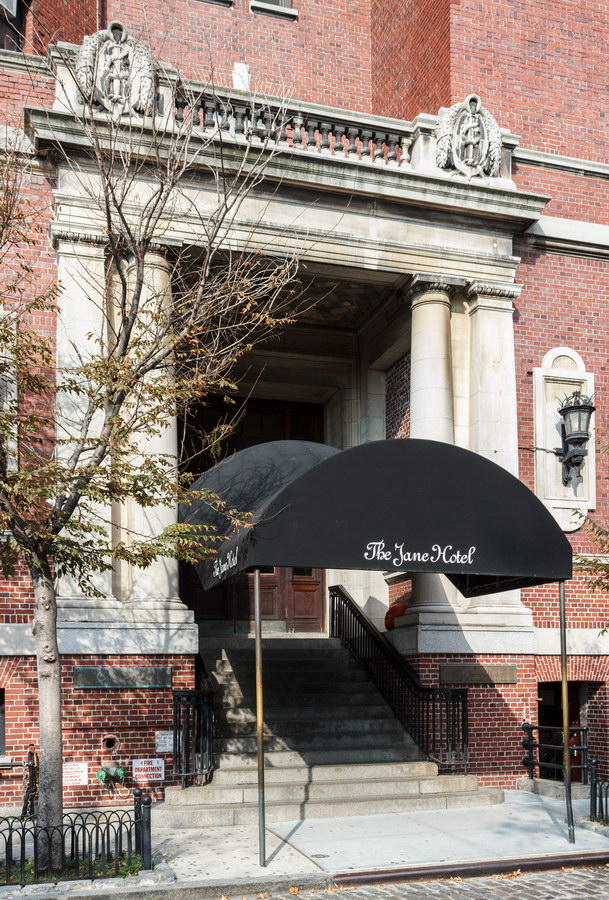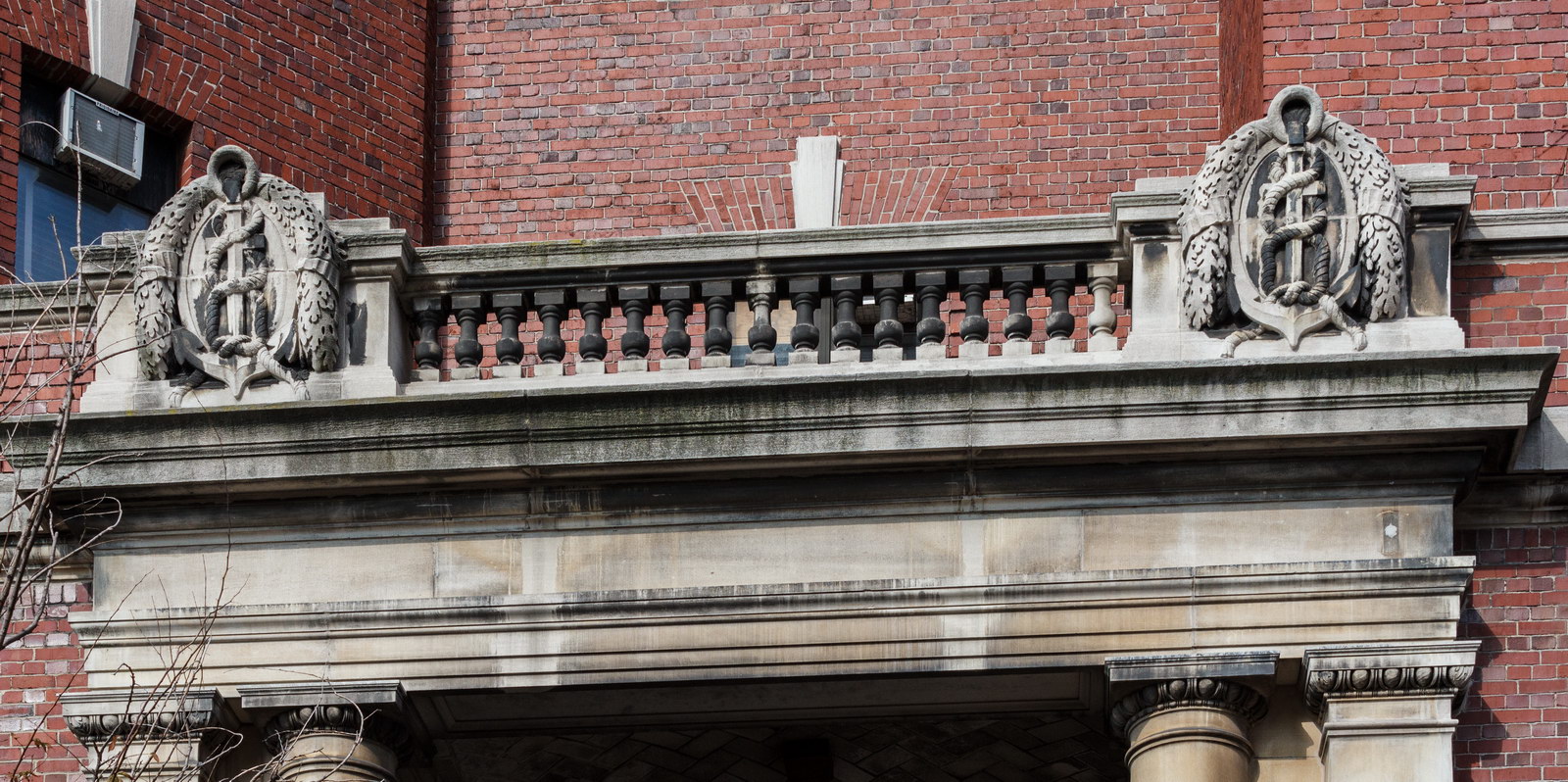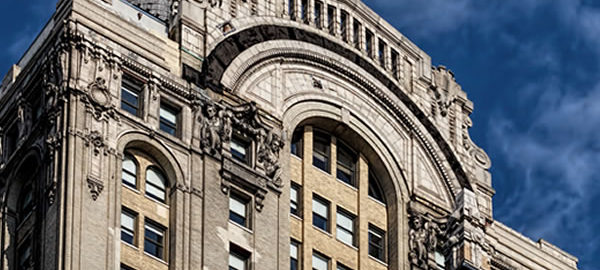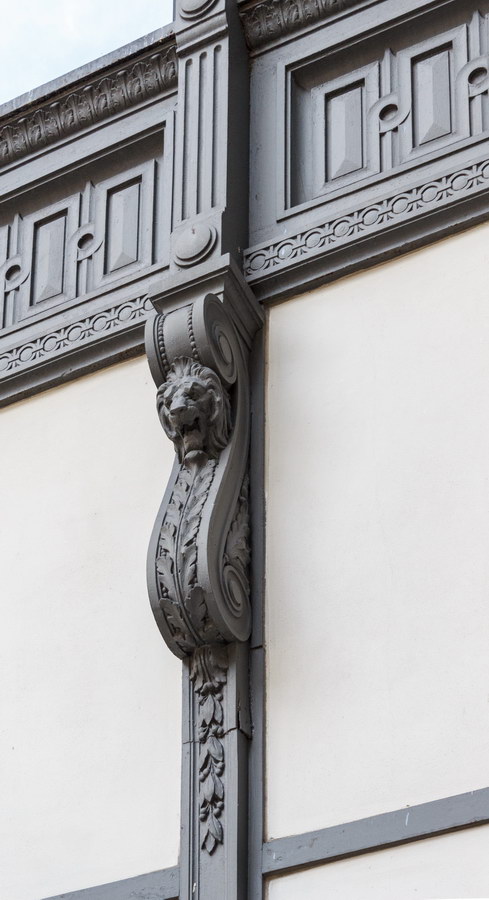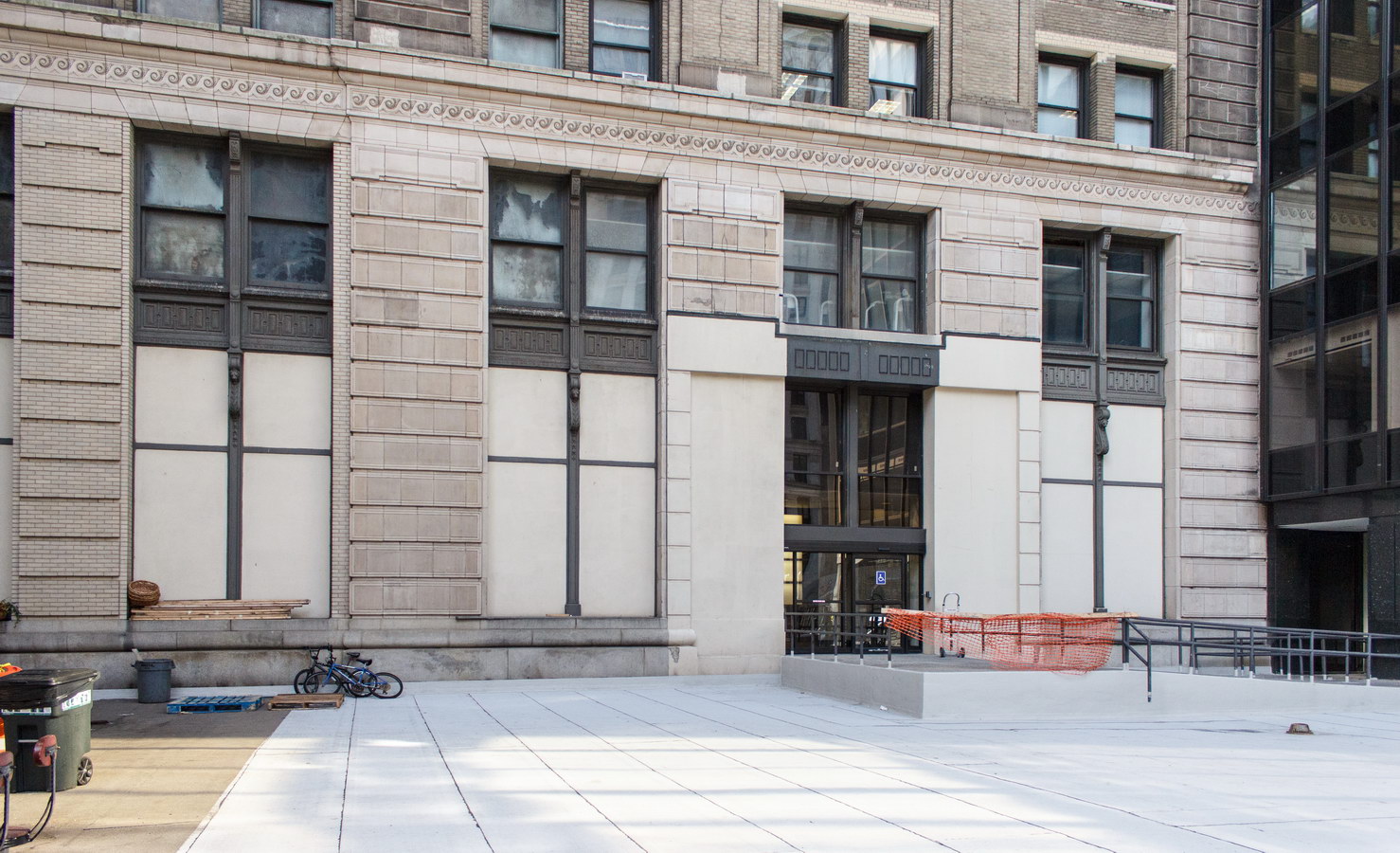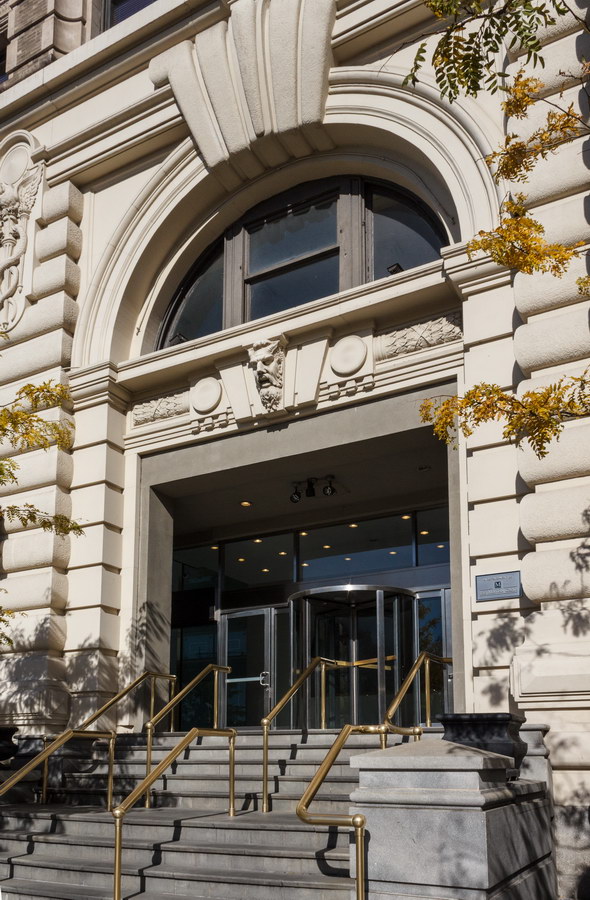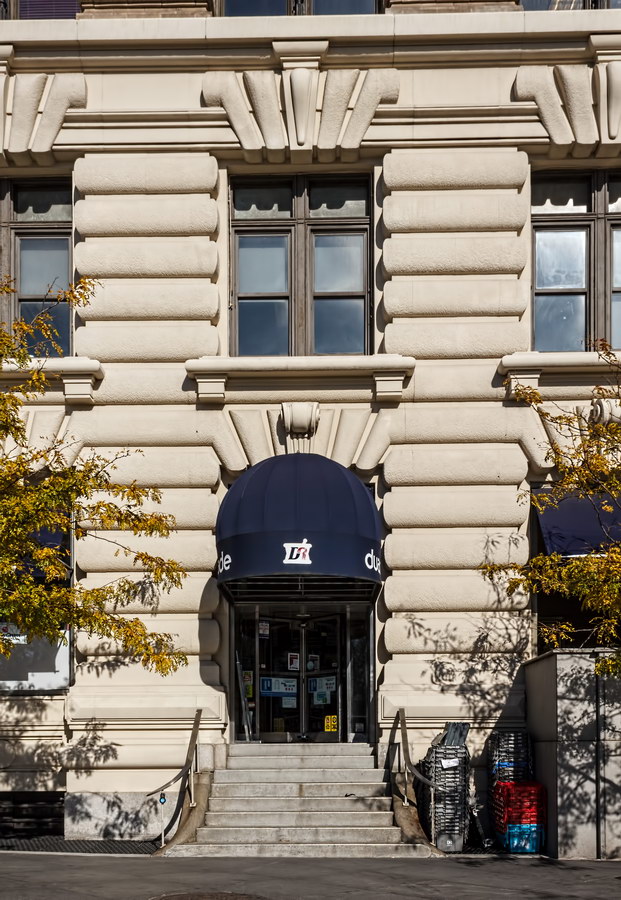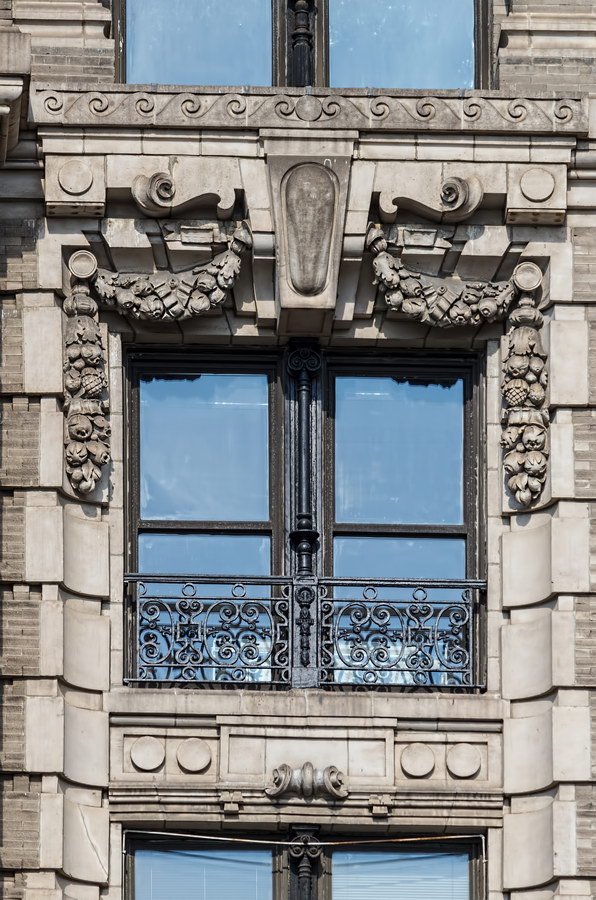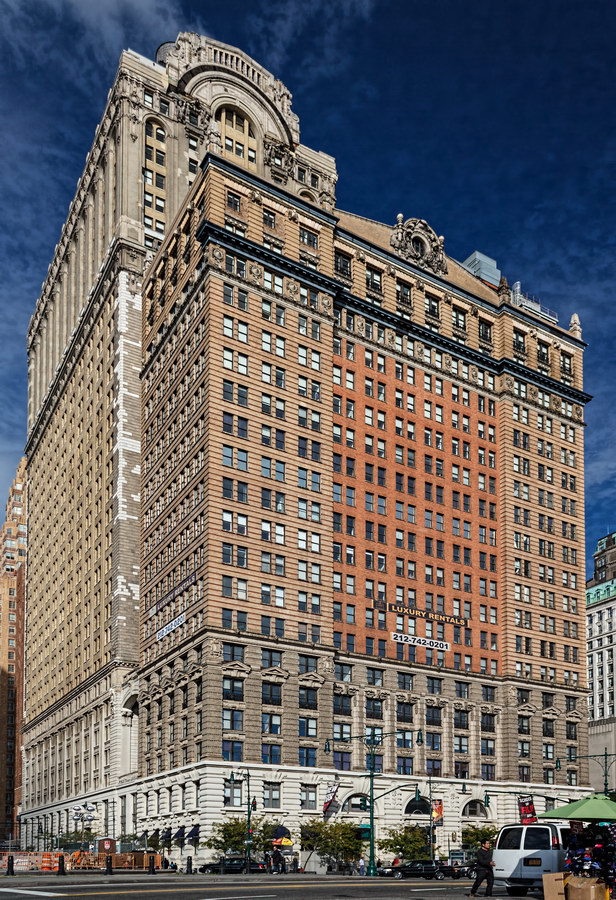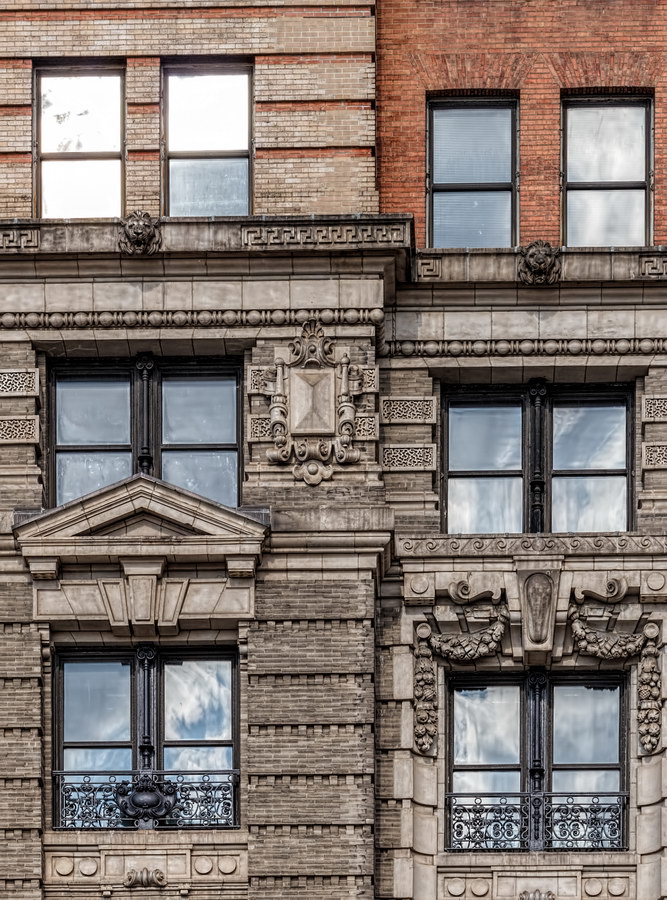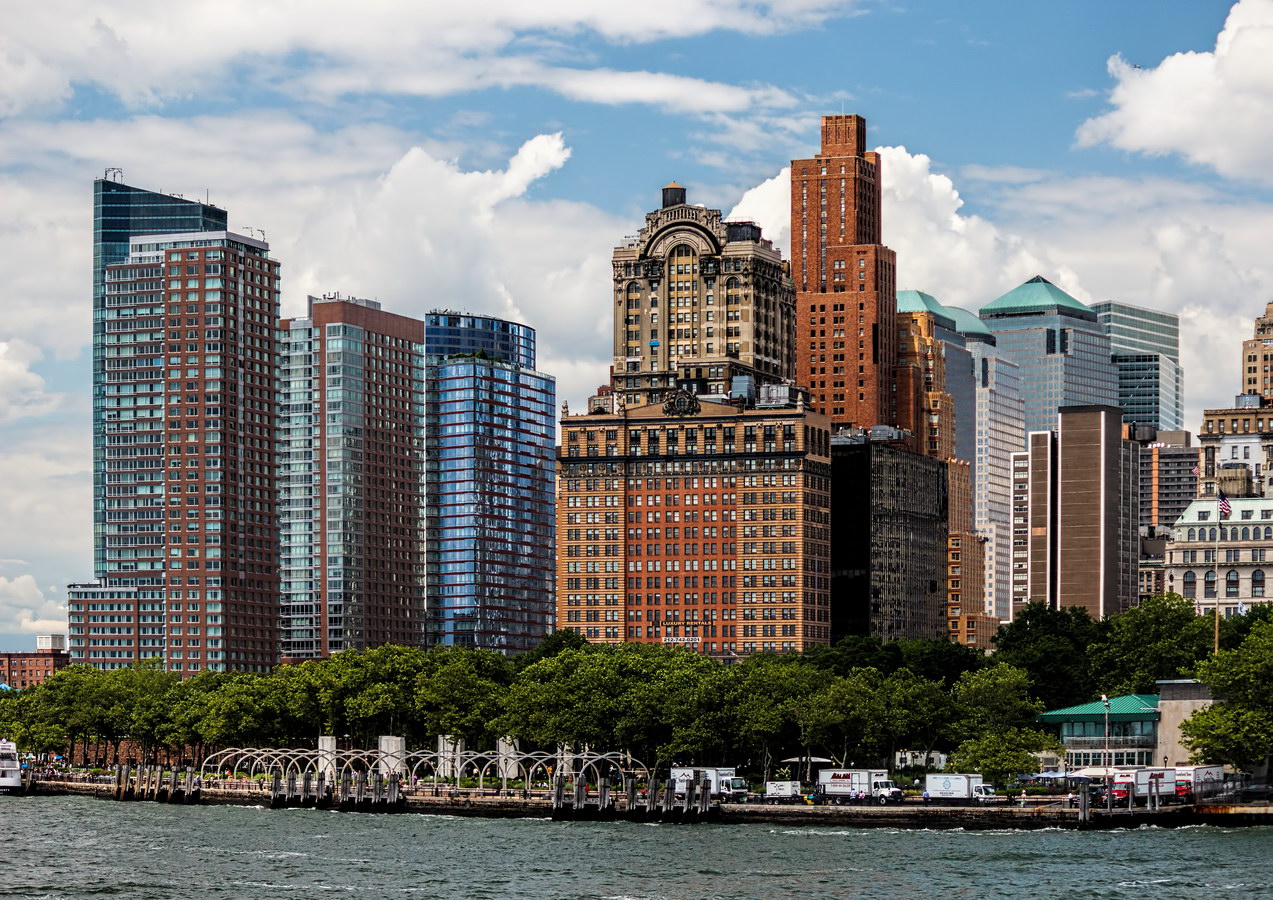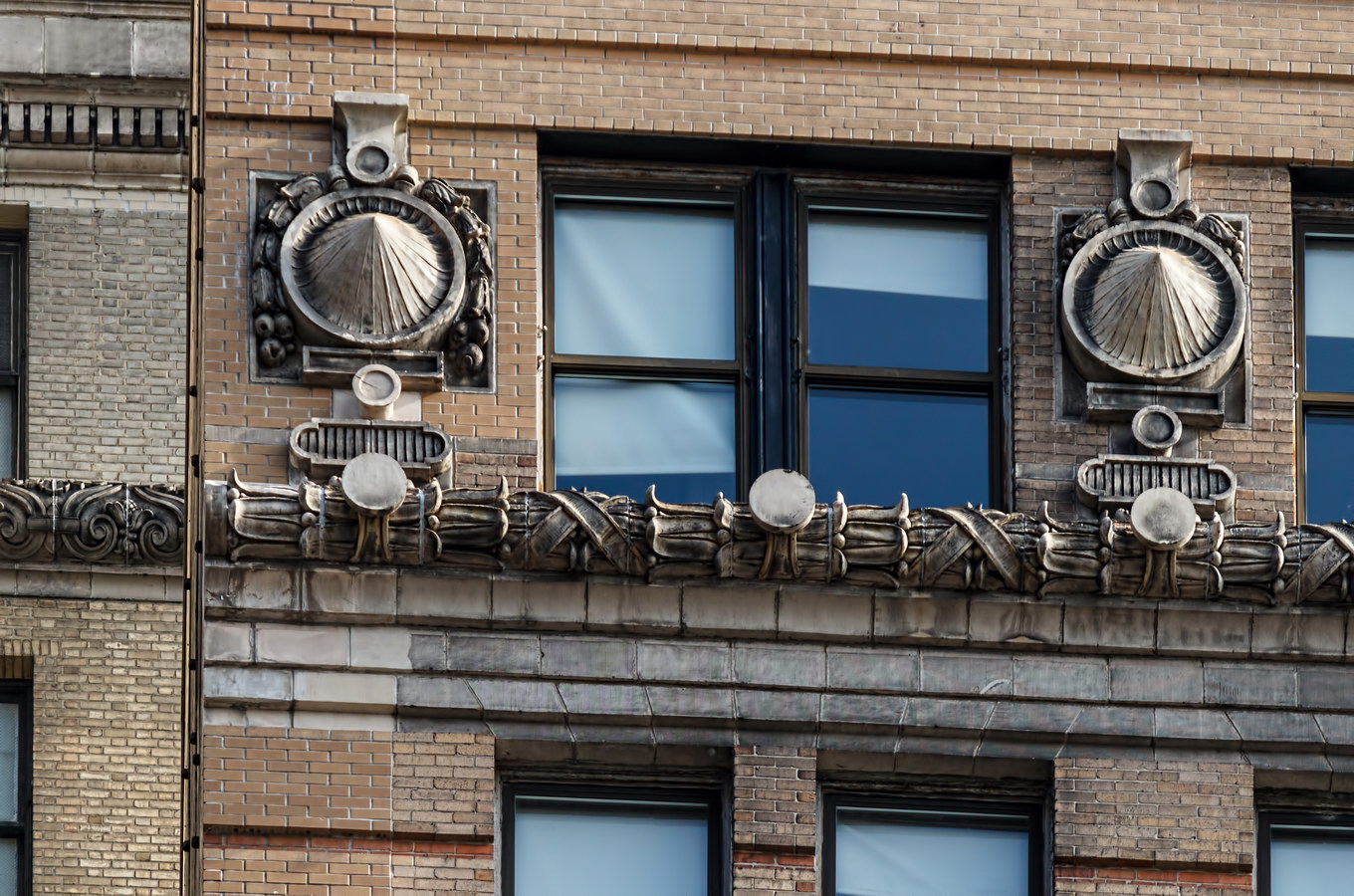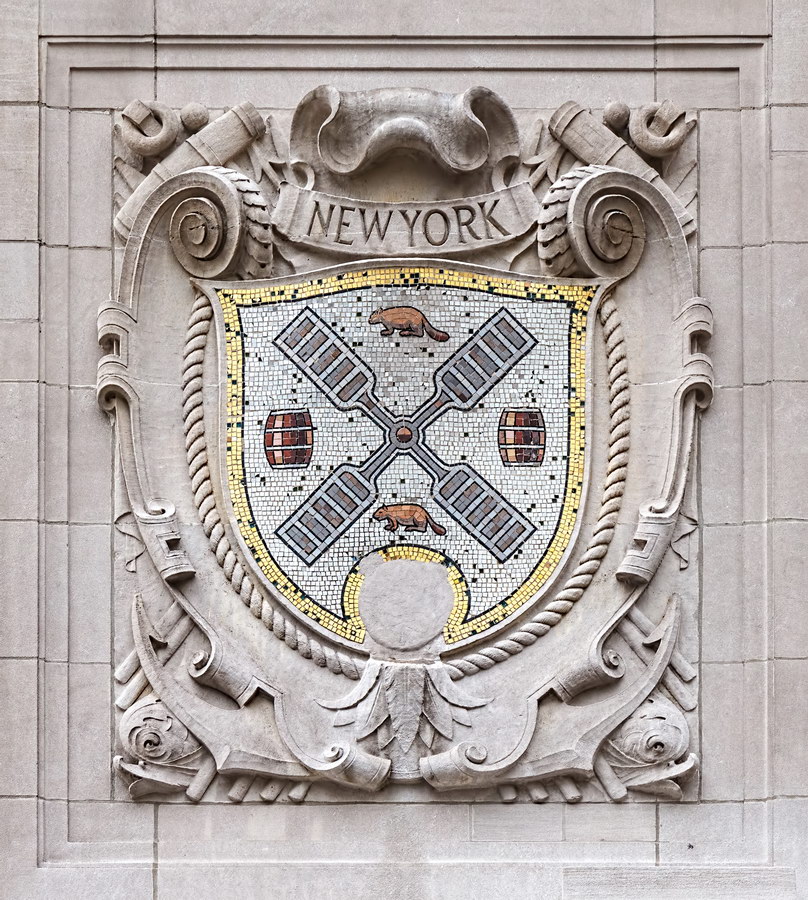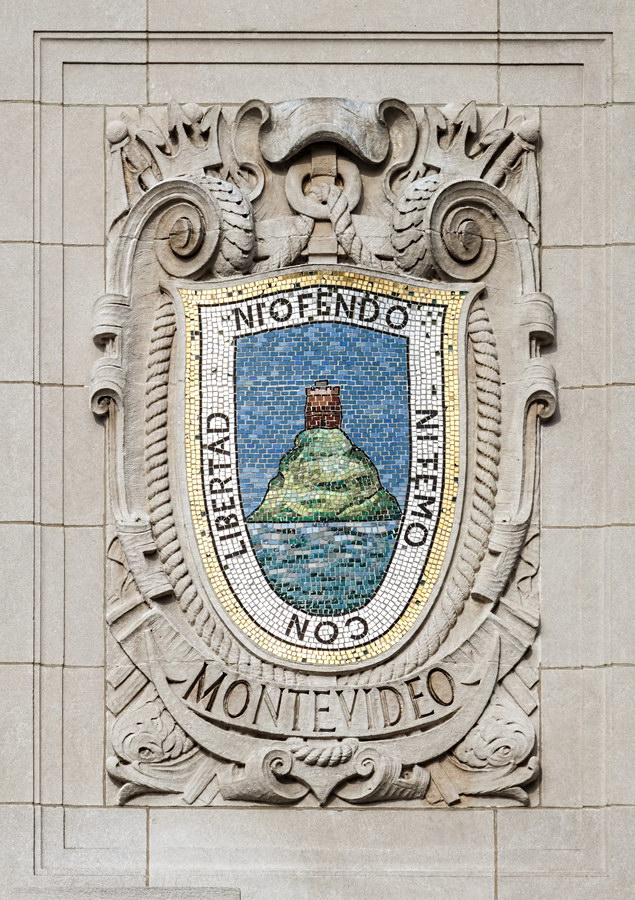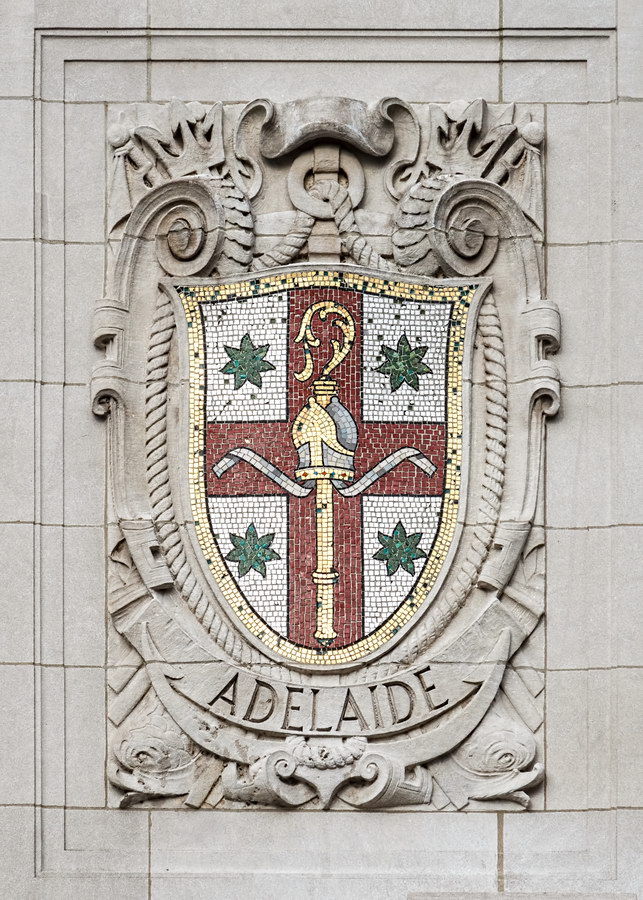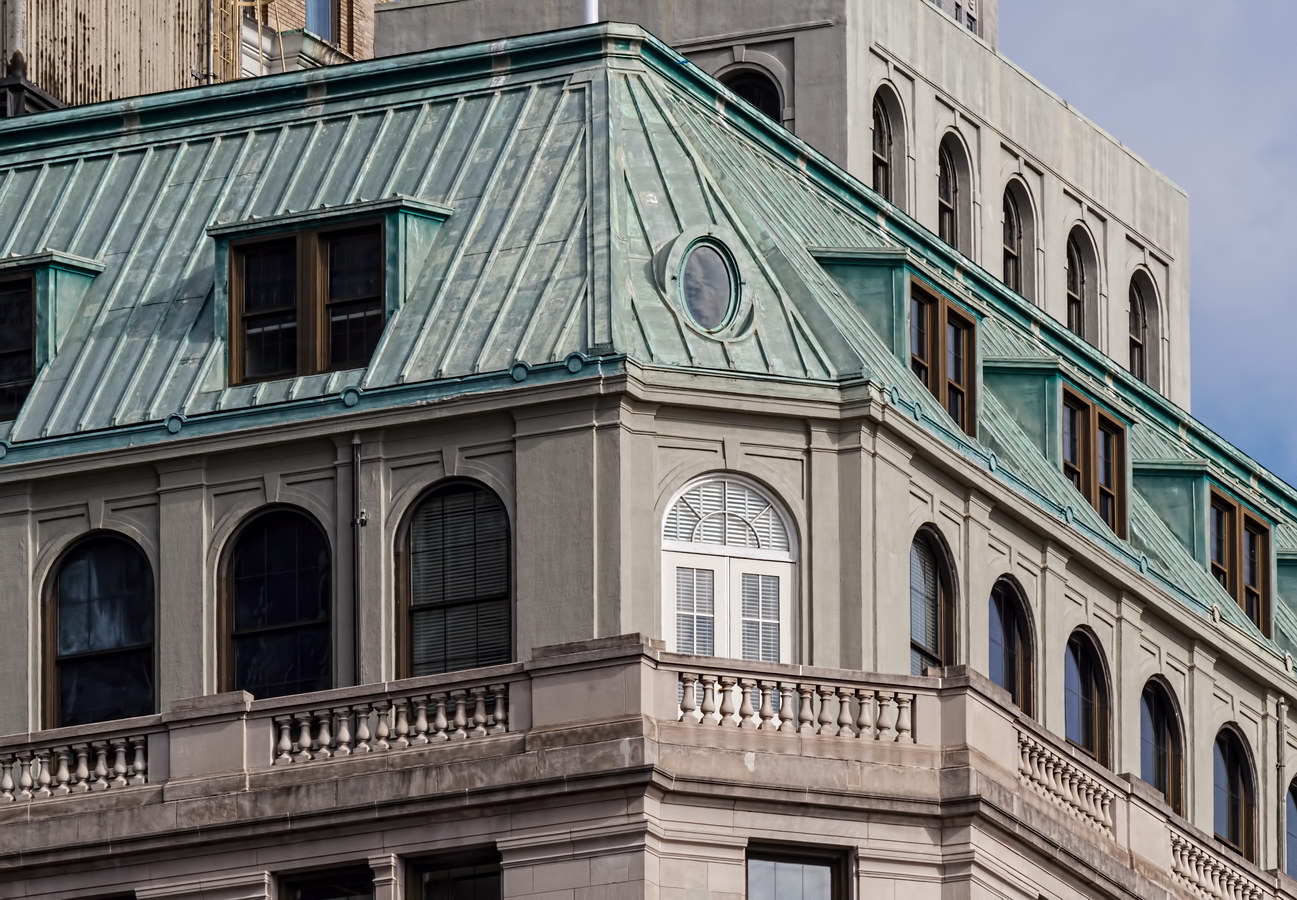Johnston Building, aka NoMad Hotel, was built in 1903 as a store and office building. It is notable for its limestone facade – an expensive finish for an office building – and for its corner tower and cupola. Last but not least, it is also notable (for 1903) that the owner was a woman: Caroline H. Johnston.
After a lengthy conversion (2008-2012) by Sydell Group, the building is now a Parisian-inspired boutique hotel with interiors designed by Jacques Garcia.
Sydell Group also operates the Ace Hotel – the former Breslin Hotel – located one block to the north.
Johnston Building Vital Statistics
- Location: 1770 Broadway at W 28th Street
- Year completed: 1903; 2012 (conversion)
- Architect: Schickel & Ditmars; Stonehill & Taylor (conversion), Jacques Garcia (interiors)
- Floors: 12
- Style: Beaux Arts
- New York City Landmark: 2001 (Madison Square North Historic District)
Johnston Building Recommended Reading
- Wikipedia entry (NoMad)
- NYC Landmarks Preservation Commission designation report page 47
- The New York Times Streetscapes: A Hip Replacement for a Down-at-the-Heels ’Hood (February 11, 2010)
- Cool Hunting NoMad Hotel
- ThisIsPaper NoMad Hotel
- dwell slideshow
- Stonehill & Taylor (conversion architect) project page
- Sydell Group (developer) project page
- The NoMad Hotel website

